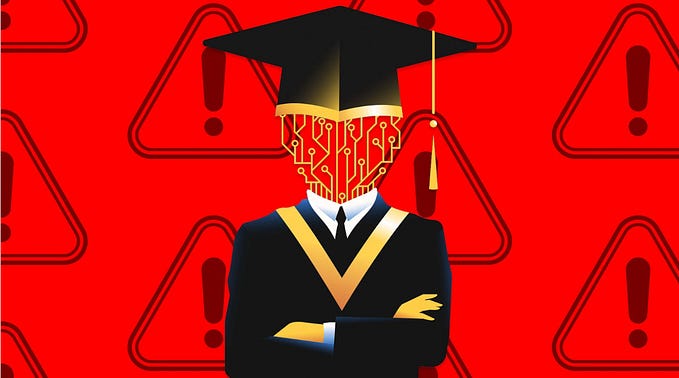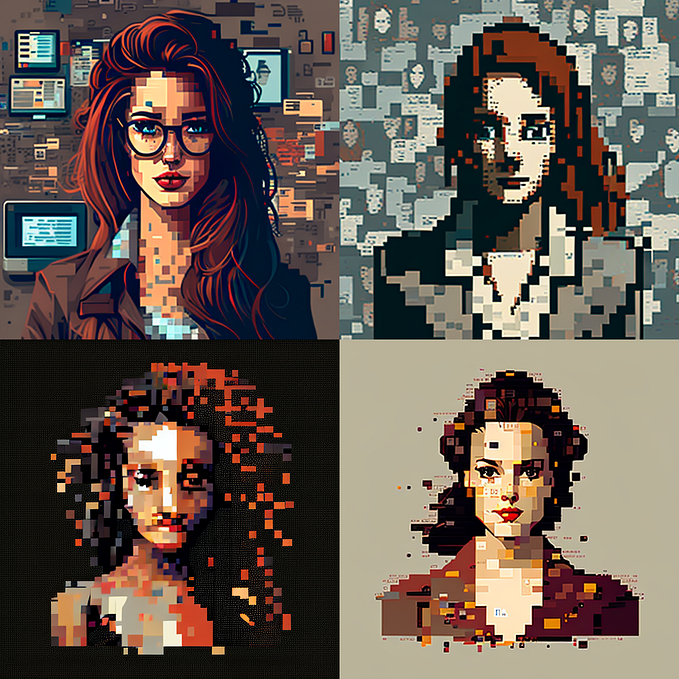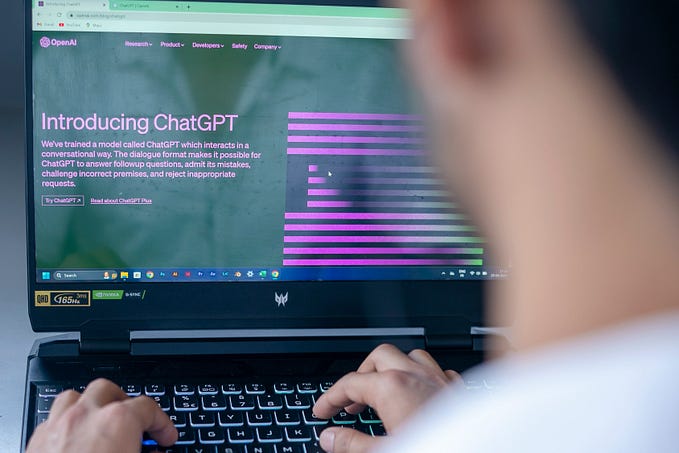Expand Your Curiosity To Build a Better World for the Next Generation
Open up your curiosity to what’s happening in places you’ve never considered looking. That way we can better understand those places we’d never thought much about before, and make them better, safer, and healthier for everyone.

Disclaimer: this represents my personal thoughts and POV and not Google’s perspectives
I was born a GenXer, but I was recently reborn as a Gen Z. At the start of the summer, I created my first TikTok account and a new Instagram account and started posting what I wear every day (fashion 📸 & 📹) in order to learn more about being an influencer and creator. Some people my age (I’m 41👴🏽) diminish what’s happening on these sorts of platforms because they don’t have a clear sense of what’s going on there. What they tend to know either comes from commentators and policymakers who don’t really understand the spaces themselves, or they just naively assume that whatever’s happening there will ultimately be harmless and won’t touch their lives. But I wanted to see up close for myself. And what I learned firsthand is that there’s an incredible amount happening in that ecosystem that we need to be aware of. It’s both worse and better than you might imagine.😱
Over the summer, I experienced scamming, bullying, the bottom rungs of the influencer economy, encouragement in unexpected places, new friendships, and a much richer environment of information and influence than I ever expected. While “living” much of life in that space, I stopped using traditional platforms for information and news and tried to get the best sense I could of what life looks and feels like from the inside looking out. (What do I mean by “living”? I mean my screen time went up ~28%, spending ~12 hours a week on social apps, versus only 1.6 hours a week on productivity and 1.24 on creativity. Ugh.) Now, though, I feel I can speak with a bit more authority about the emotional effect it has.
A lot of people talk about walking a day in someone else’s shoes. But what I wanted to do was try on the shoes, leave the store, and then spend a few months wearing out the soles. Not necessarily because I wanted to buy the shoes in the first place, but because I wanted to understand what it might be like to be someone who did. Everything around us tends to reinforce everything around us. So little propels us to go outside of what we know. But what if we embraced the lack of constraints of space and time that are afforded by these digital platforms to teleport ourselves with increased empathy? By wearing some strange shoes all summer that you never would’ve wanted before, your whole worldview can change — and who knows, you might even end up buying that pair of shoes after all.
By expanding my empathy in this way, I got to a point where I was not just observing what was happening to others but experiencing firsthand what it’s like to hand a big part of your life, particularly your emotional life, over to what’s going on on these platforms. What it is is like to expose your belly to a whole bunch of positive and negative feedback constantly. It creates a new set of ways to feel terrible about yourself. But also better resources than anywhere else on the internet to be picked back up by the community you can find there.
When I started posting, it was daily photos or videos about how I put outfits together. It wasn’t long before I received offers for paid posts and sponsorships. I also received offers to provide me with followers in exchange for payment. (The influencer economy flows both ways.) I received some positive feedback, as well as constructive criticism. But I mostly received a deluge of mean-spirited remarks. Hate and hurt. The amount of negativity that I received per post was way larger than the positive, and the frequency of it was something I hadn’t dealt with before. I was bullied as a kid, but not every day, every other hour. Gawhd.
That harassment and hate — I experienced it viscerally. It really got into my head and crept into my real life. I found myself constantly checking my phone during dinner time, while reading my daughter a bedtime story, and even while watering the plants. I just felt that I needed to refresh my feed. Even though I was “conscious” of it being on a self-imposed experiment. The whole spectrum of feelings gave me new insights into the hardships of these younger generations.
Every human has their hardships. It’s just that often we don’t connect to them. The ability to level-set those hardships is something that we lose as we grow up. But it’s the ultimate act of empathy to try. As I posted more often, and got both more positive and negative comments, I started to get a personal feel for the problem we hear about from influencers, creators, and young people living so much of their life online: the feedback loop of wanting (or needing) to post in order to elicit positive reactions, while also suffering the degrading effects that the negative reactions have on us.
The comments and DMs made me more anxious than I’ve been in years about how I was being perceived by others. It sent me right back to my own battle with depression. I’ve been in a steady emotional state for a while (thank you, antidepressants and support groups!). But those conditions of the ecosystem can exacerbate already vulnerable emotional states and lead to depressive episodes. When our sense of worth and validation comes mostly from the outside, there’s nothing to balance it from the inside. Humans drift in groups toward nowhere, and when belonging stops there, and there’s nowhere else to go, they crumble.
Which is why it’s particularly incumbent upon those of us in older generations to consider how these ecosystems where young people are spending so much of their time are contributing to their emotional states. You don’t need me to tell you that depression is up among young people — especially girls. Though I would encourage you to read this open source lit review. (Haidt, J., & Twenge, J. (2021). Is there an increase in adolescent mood disorders, self-harm, and suicide since 2010 in the USA and UK? A review. Unpublished manuscript, New York University.) The study finds that 22+% of all teen girls in the U.S. have experienced a major depressive episode in the last 12 months. Those numbers blow my mind and break my heart 💔
As I got deeper into my experiment, I started to realize that while I’d thought I was trying to learn about one thing (the influencer and creator economy, what choices lead to increased followers or greater influence, etc.), I was in fact much more consumed by another set of questions. How can Gen-Xers help make these spaces safer for the newer generations to thrive? How can we make these digital ecosystems more helpful and less harmful for the mental health of young people?
What happens when a platform designed to create connections actually creates division and isolation? What happens when a platform designed to help people express themselves causes people to lose a sense of who they are?
My working hypothesis was that the increasingly shorter, simpler, and more scannable formats and interfaces were somehow to blame: How can you have meaningful human interactions if everything is compressed into a simple label or meme? I was — and continue to be — concerned for my daughter and all the kids growing up with such restrictive communication tools.
That’s the part of all this that is worse than you probably even imagined. Now I want to tell you about the part that is better. The part that I’m inspired by and that gives me hope.
Related to the surge in depression in this country is the fact that questions concerned with suicide, depression, and other matters of mental health are also going up on most platforms. What sorts of resources and responses can tech platforms provide when a user is most in need? What’s particularly interesting about my experiment is that I think a place like TikTok has a lot of the kinds of answers we might consider.

Lately, I’ve spent a lot of time feeling my way around the options for suicide help on both my more traditional platforms and the platforms I’ve been using as an influencer and creator. What I’ve found is a stark contrast in content and resources. When you type “suicide” into traditional platforms, for example, you get news stories about recent suicides, a number for a suicide prevention hotline, and lots of scientific, medical, and psychology resources related to suicide. It is all very responsible, neutral, and clinical. It is, perhaps, what a university student or a curious adult who wishes to know more about suicide might find useful on their journey to learning more. But it is not necessarily what a person in immediate need would benefit most from.

In contrast, when you browse suicide related hashtags on newer platforms, you get something far more emotional. Videos of people talking about their depression and suicidal thoughts. Videos of people talking about wanting to end their lives, and others in the community offering love and help, affirming their availability for the person in need, coming together in an attempt to literally save a life. It is an emotional tidal wave. And it is the sort of thing that might help a person in need. Just seeing others who have felt what they feel, and have come through it. Receiving the help, not via a clinical website, but via an intimate video.
These newer platforms are both contributing to the conditions that make users feel more susceptible to mental health crises as well as providing the emotionally resonant responses that can help users get better. This is what I mean by both worse and better. Now, it is our responsibility, as members of a different generation (OLD), to understand these platforms with greater fluency and find ways to reduce the negative elements while borrowing the positive elements to help improve the ecosystems of other digital platforms.
During my adventures in influencing, it wasn’t just that I learned things I knew I didn’t know. It was that I learned things I didn’t know I didn’t know.
I went into this whole project on a bit of a lark — curious to find out what sorts of outfits might move the needle or what the going rate might be for a collaboration with a brand. What I didn’t know was that by spending my summer on newer platforms I’d encounter a whole new framework for considering how we might build a response for sensitive mental health queries on our platforms in order to more effectively engage with users. That is, to privilege the emotional over the rational, the heart over the head ❤️ >🧠, human warmth over technological efficiency.
That was only possible by immersing myself completely, even as I exposed myself to some deeply hurtful comments and some real emotional harassment. What I’d encourage you to do in your life is this: Open up your curiosity to what’s happening in places you’ve never considered looking. That way we can better understand those places we’d never thought much about before, and make them better, safer, and healthier for everyone.
Illustrations by Ingrid Ma









